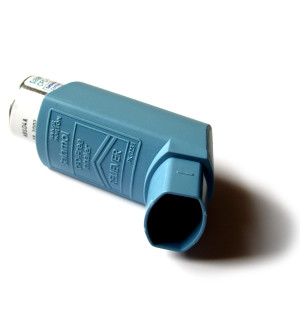- Skip Storing This Everyday Product in the Fridge Door
- Green Tea + B3 Pairing May Boost Brain Health
- Navigating Your Midlife Crisis: Embracing New Possibilities
- City Raccoons Showing Signs of Domestication
- Mapping the Exposome: Science Broadens Focus to Environmental Disease Triggers
- One Week Less on Social Media Linked to Better Mental Health
- Your Brain Changes in Stages as You Age, Study Finds
- Some Suicide Victims Show No Typical Warning Signs, Study Finds
- ByHeart Formula Faces Lawsuits After Babies Sickened With Botulism
- Switch to Vegan Diet Could Cut Your Greenhouse Gas Emissions in Half
Costs a Barrier to Asthma Care for Some Kids


High health insurance co-pays in the United States increase the odds that children with asthma will miss out on important doctor visits and preventive medications, a new survey finds.
Parents with higher co-pays reported switching to less expensive drugs, giving their children less medication than prescribed and putting off doctor visits or trips to the emergency room.
“Asthma is one of the most common chronic conditions among children, and the prevalence of asthma is greater among low-income populations,” said study author Vicki Fung, a health services researcher at Massachusetts General Hospital in Boston.
Over 9 percent of U.S. children have the potentially fatal chronic respiratory illness, according to the U.S. Centers for Disease Control and Prevention.
Children who are treated early and use medication to prevent asthma flare-ups do better than kids who are only treated when an attack occurs, said Dr. Jefry Biehler, chairman of pediatrics at Miami Children’s Hospital in Florida.
As health insurers and employers require patients to pay more out-of-pocket medical costs, many families, even those with insurance, could struggle to afford the cost of care, Fung said.
The Affordable Care Act, signed into law in 2010, has enabled more families to obtain health insurance, but some of those policies are expensive or require cost-sharing. Also, although the law provides for subsidies for many low-income children, certain rules exclude some families from receiving these subsidies. And Fung questions whether these subsidies are enough to reduce cost barriers to care.
This new study, published online May 19 in the journal JAMA Pediatrics, provides valuable information, Biehler found. “It is concerning that the children we deal with are sometimes more vulnerable in areas we didn’t recognize,” he said.
Gaps in insurance coverage that keep children from getting the care and medicine they need should be closed, he added.
“We have to be careful that we don’t create a void for those families that can’t afford all the things they need for their child, but who are above the financial level that gives them government insurance that will provide everything at no or minimal cost,” he said.
For the study, Fung’s team telephoned 769 parents of children with asthma, ages 4 to 11. The researchers asked what role costs played in accessing care for their child.
Among the children, one-quarter had publicly funded Medicaid or the Children’s Health Insurance Program. About 22 percent were covered by private insurance and had household incomes at or below 250 percent of the federal poverty level — $47,725 a year for a family of three. About 18 percent had high co-pays for all services — for example, $75 or more for an ER visit.
Among parents at or below 250 percent of the federal poverty level, those with high co-pays were far less likely to take their children to a doctor than similar parents with lower co-pays — about 4 percent compared to almost 32 percent, the researchers found. They were also less likely to take their sick children to the emergency room — about 1 percent versus 19 percent.
Those same parents with high co-pays were also less likely to get care for their children than parents with higher incomes or those with Medicaid subsidies, the study found.
Other cost-related findings:
- Nearly 3 percent of parents said they changed to a cheaper medicine, and nearly 10 percent said they gave their child less medicine than prescribed because of cost.
- Four out of 10 parents who reduced their child’s medication admitted it affected their child’s asthma care or control.
- Almost 8 percent of parents said they delayed or skipped taking their child to the doctor. Over 5 percent reported they delayed or avoided going to the emergency room.
- Among those who put off doctor visits, 38 percent said it affected their child’s asthma care or control. More than one-quarter who avoided an ER trip because of expenses said the same.
- Almost 16 percent of parents said they borrowed money or cut back on necessities to pay for medical care for their children.
With the Affordable Care Act in “full swing” now, Fung said it’s important to keep monitoring its effects and close any unintended gaps in coverage.
More information
For more information on asthma, visit the American Lung Association.
Source: HealthDay
Copyright © 2025 HealthDay. All rights reserved.










